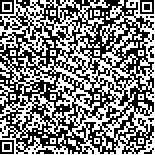| 摘要: |
| [摘要] 目的 鉴定1例重度感音神经性耳聋患者的遗传病因,明确检出突变的致病性,以及患者人工耳蜗康复效果,为该家庭再生育提供遗传指导。方法 采集广西壮族自治区一个耳聋小家系样本3例,包括1例重度感音神经性耳聋患儿和其正常听力父母。对该家系成员进行病史调查、体格及听力学检查,采集外周静脉血。进行全基因组测序和生物信息学分析鉴定致病基因,评估人工耳蜗术后听觉与言语康复效果。结果 ESPN基因c.1916-1G>A纯合突变是该家系的致聋原因,人工耳蜗术后听觉与言语康复效果良好。结论 研究发现了ESPN基因一个新的突变,是该耳聋家系的致病原因。回访发现人工耳蜗术后患儿言语康复效果好。该研究丰富了遗传性聋的突变谱,并对人工耳蜗植入的术前评估具有指导意义。 |
| 关键词: ESPN基因 遗传性耳聋 人工耳蜗 |
| DOI:10.3969/j.issn.1674-3806.2023.05.03 |
| 分类号:R 764 |
| 基金项目:国家重点研发计划项目(编号:2021YFC1005301) |
|
| Genetic diagnosis of autosomal recessive deafness caused by rare homozygous mutation of ESPN gene and evaluation of cochlear implant rehabilitation outcomes |
|
LIU Yan, ZHONG Ming-jun, XIONG Wen-yu, et al.
|
|
Department of Otolaryngology Head and Neck Surgery, West China Hospital, Sichuan University, Chengdu 610041, China; Institute of Rare Diseases, West China Hospital, Sichuan University, Chengdu 610041, China
|
| Abstract: |
| [Abstract] Objective To identify the genetic etiology of a patient with severe sensorineural hearing loss, to clarify the pathogenicity of the detected mutation and the rehabilitation outcomes of the patient′s cochlear implant, and to provide genetic guidance for the family′s reproduction. Methods Three samples were collected from a small deaf pedigree in Guangxi Zhuang Autonomous Region, including one patient with severe sensorineural hearing loss and his parents with normal hearing. The family members from the deaf pedigree were investigated for medical history, and were given physical and audiological examinations, and their peripheral venous blood was collected. Whole genome sequencing and bioinformatics analysis were conducted to identify the pathogenic genes and evaluate the outcomes of hearing and speech rehabilitation after cochlear implantation. Results A homozygous new mutation of ESPN gene was the cause of deafness in the deaf pedigree, and the hearing and speech rehabilitation outcomes after cochlear implantation were good. Conclusion The study identifies a new mutation of ESPN gene, which is the pathogenic cause of deafness in the deaf pedigree. The follow-up study finds that the speech rehabilitation after cochlear implantation is effective in the patient. This study enriches the mutant spectrum of hereditary deafness and has guiding significance for the preoperative evaluation of cochlear implantation. |
| Key words: ESPN gene Hereditary deafness Cochlear implant |

